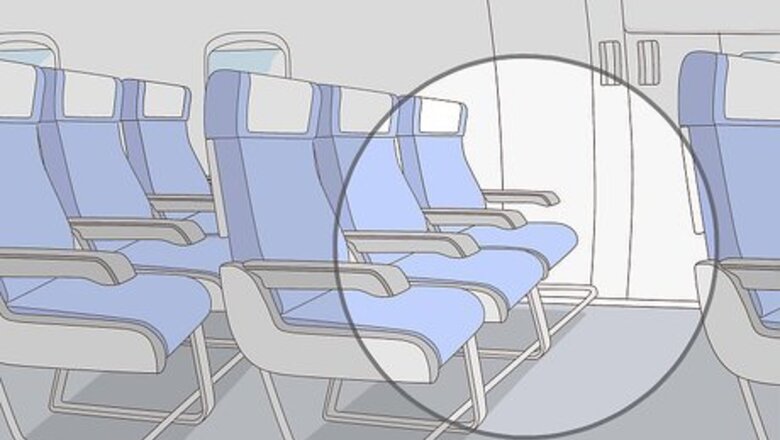
views
Maximizing Your Space and Physical Comfort
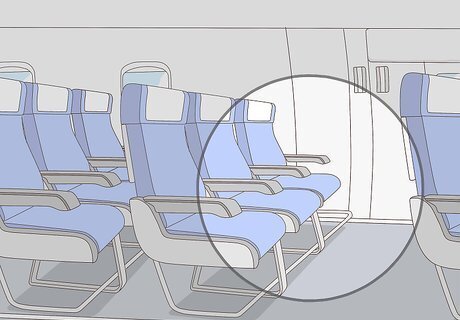
Reserve a good seat if you can. Check ahead with your airline to see if you can snag a comfortable seat on the flight. Even within the same class and fare, some seats are far superior to others. Consider an aisle or exit row seat for added legroom, or a window if you want to lean against the wall and sleep. Try to avoid seats near the toilets/lavatories, as other passengers will be accessing these regularly. Bulkhead seats are also a good option if you need extra legroom. These are seats positioned behind dividing walls, screens, or curtains, with no other seats directly in front of them. Remember to never choose an exit row seat if you will have an infant or small child with you, since this could make it more difficult for you to open the exit door in case of an emergency. Some airlines allow you to pay a little extra to get a better seat, even if you aren’t going first class or business class. These options may have names like “Economy Plus” or “Even More Space.”
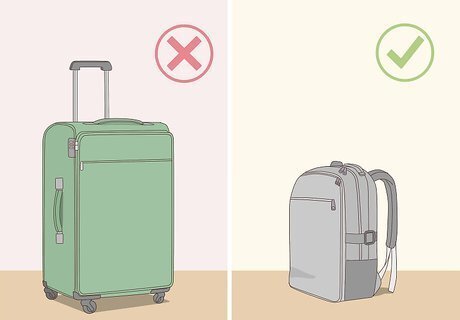
Minimize your carry-on luggage. If you’re overwhelmed with luggage, getting comfortable on the plane may be difficult. Check with your airline ahead of time to find out about their check-through and carry-on policies, and bring only the absolute essentials onto the plane with you. One backpack is fine for the plane, and it is easier to find a place in the overhead bins or under the seat for a small backpack than for a larger roller bag. Many airlines will allow you to bring one carry-on bag per passenger, plus a “personal item” such as a purse or diaper bag. Check with your airline to make sure your carry-on luggage meets their size and weight requirements.
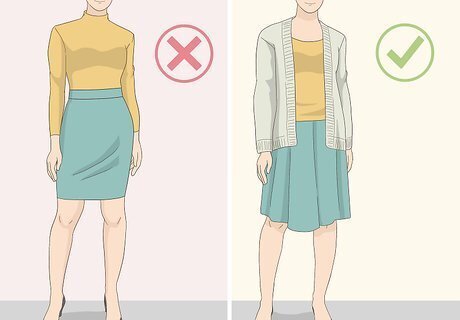
Dress comfortably for the flight. Wearing tight or uncomfortable clothing can make a long flight miserable. Dress in loose, cozy clothes and comfortable shoes, and make sure to bring at least one layer (like a sweater or zip-up hoodie) in case it gets cold on the plane. Compression socks or stockings can help improve circulation in your legs and prevent inflammation and blood clots when you have to sit in one position for hours at a time.
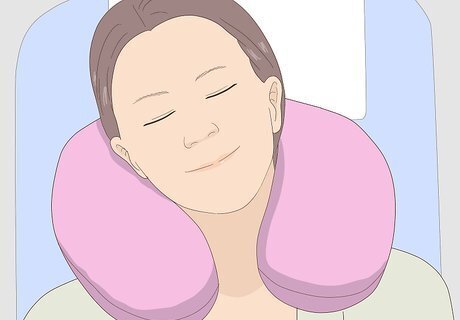
Bring a pillow if you plan to sleep. Trying to sleep in an airplane seat without extra head support can result in lots of frustration and neck pain. Take a travel pillow or head restraint, and try to avoid using the inflatable ones unless you know you will be comfortable. If you don’t already have a travel pillow, you can purchase one at a shop in most airports. Some airlines offer their own pillows for long flights, but they may charge extra for them. Check ahead of time to find out if your airline provides in-flight pillows and blankets. Since planes can get cold, you may also wish to bring a small throw or travel blanket.

Have a few hygiene essentials on hand. Take a hairbrush, toothbrush, lip balm, and anything else that you need to help you freshen up before you land. Facial wipes are also a great for helping you feel clean and refreshed. Be courteous to your fellow passengers by stepping into the bathroom before you brush your teeth or freshen up your deodorant! Check airport security regulations before packing any liquids or gels in your carry-on luggage. You can safely travel with most liquid or gel products if they are in containers no larger than 3.4 fluid ounces (100 mL).
Staying Active and Entertained
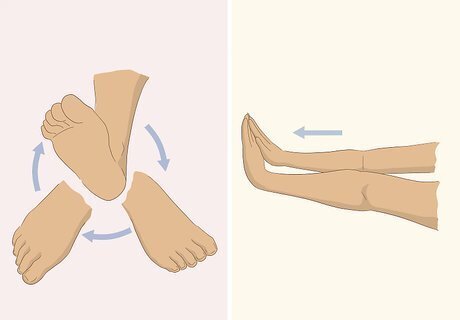
Move around as much as possible during the flight. This is especially important on longer flights to prevent aches, poor circulation, and potentially dangerous conditions like deep vein thrombosis. Some airlines provide guidance on in-seat exercises you can do (such as ankle circles or arm stretches). The long mid-flight stretch on overnight flights is an excellent time to take a stroll up and down the aisle a few times. There may be room to do stretches at the back of some airplane cabins. Before getting up and walking around, wait until your flight crew tells you it is safe to do so. Participate in the in-flight exercise video, should your flight provide one. These are designed to help improve circulation and reduce fatigue.
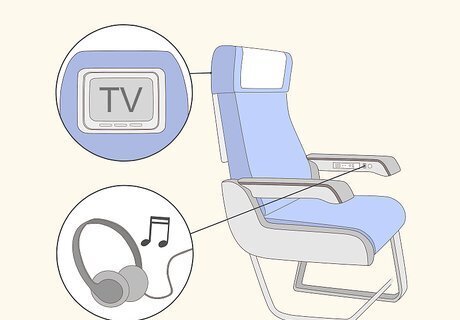
Go with an airline that offers in-flight entertainment. Many airlines show in-flight movies or have a variety of radio stations that you can listen to by plugging headphones into the jack on your seat. Some flights have TV screens built into the back of each seat that display movies, TV shows, and flight information. These can be very useful for helping the time pass quickly. Check ahead with your airline to find out what in-flight entertainment options they offer. If your airline offers A.V.O.D. (Audio Video on Demand), you can pay extra to watch premium content or play games on your screen during the flight. But be careful—this can get expensive!

Take something to entertain yourself. Usually, in-flight movies don't start for some time, and the built-in music/movie selections can be quite poor. Bring a device, such as a tablet, computer, or portable DVD or Blu-ray player, with some of your favorite movies, music, podcasts, or e-books on it. You could also take a new book that you like or portable game. Make sure to charge all your electronic devices before getting on the plane. Some airlines offer free Wi-Fi so that you can browse the internet on your devices during the flight. Always have a couple of recent magazines with you. Pick out some magazines at the airport before you leave. That way, you won’t be stuck reading the in-flight magazines! Other good entertainment options include crossword puzzles, sudoku, or adult coloring books. If you’re crafty or artistic, you might bring a sketch pad or a knitting project.

Pack your own headphones. The headphones typically available on the plane (whether for purchase or for free) are usually of poor quality. Noise-canceling headphones and in-ear headphones are great if you have them, and can help block out engine noise and chatter from other passengers. If you’re just looking to block out noise, some simple earplugs are also a good option.
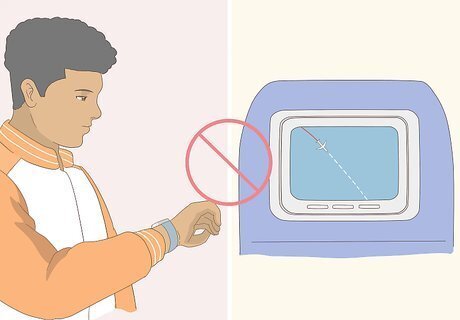
Resist the urge to watch the time during the flight. You can't do anything about how long the flight is taking, and it will feel even longer if you keep looking at the time. Don't check your watch regularly, and avoid looking at the in-flight map showing the current position of the plane. If you feel the urge to check the time, try distracting yourself with an entertaining activity instead.
Getting Enough Rest and Nourishment
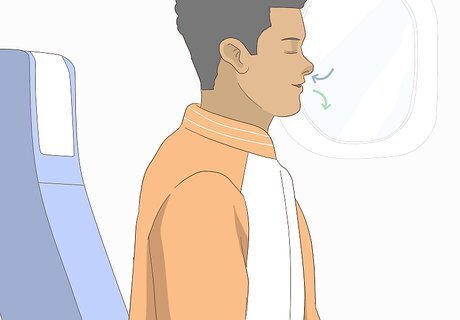
Do relaxation exercises if you feel tense. If you feel nervous, irritable, or claustrophobic, try using some relaxation techniques to put you at ease. Do some deep breathing, meditation, or a few simple yoga poses you can do in your seat. Do an online search for “in-flight yoga poses” to find stretches you can do in a confined space. Listening to peaceful music, reading, or doing a little doodling or coloring can also help. If you get extremely tense or scared on flights, talk to your doctor or a counselor. They may be able to recommend coping strategies or even prescribe medications that can help.
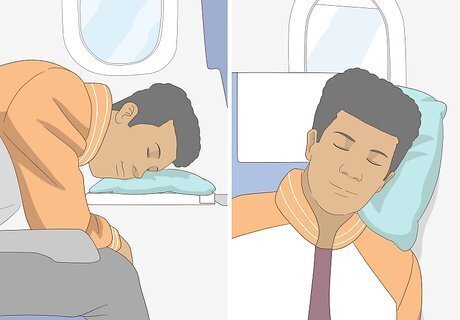
Try to find a comfortable sleeping position. If you brought a pillow, put it on the tray in front of you and rest on that. If you have a window seat, leaning against the wall or window can be much more comfortable than leaning back. If leaning on the wall isn’t an option, recline your seat as far as possible to make leaning back more comfortable. Use caution and courtesy when leaning your seat back. Ask the passenger behind you if you can safely lean back so that they don’t end up with crushed knees or a lap full of coffee. If you are traveling with friends, parents, or other family members, you can lean on them to sleep. Avoid drinking caffeinated beverages on the flight. These can not only make sleep more difficult, but may also have you scrambling for the bathroom multiple times during your flight. Bring an eye mask so that you can block out excess light while you’re trying to sleep.
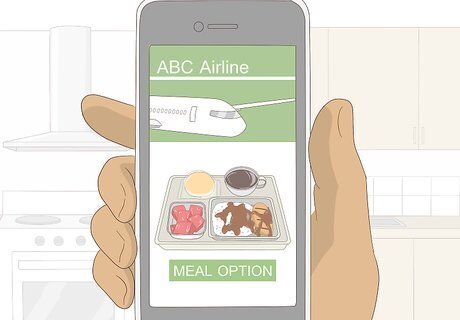
Check into your meal options ahead of time. While most domestic flights in the U.S. no longer offer free meals, some airlines do provide free snacks. Some also offer a menu with a variety of foods and beverages you can purchase in-flight. Contact your airline in advance to find out what kinds of in-flight meals and snacks they offer. If you are taking an international flight or flying outside the U.S., you may have a choice of complementary in-flight meals and snacks. Many airlines offer vegetarian, Kosher, Halal and other "special" meals if you order up to 2 or 3 days in advance. Because the airlines have to specially prepare your meal, it is usually better than the standard food fare. Plus, passengers with special meal requests are almost always served first.

Take some sweets or other snacks with you. Many airlines don’t provide enough food during long flights, and the food that’s available may be unhealthy, unpleasant, or expensive. If you’ve checked ahead and aren’t crazy about your in-flight options, bring along a few snacks, like some granola bars or pieces of fruit. Protein bars are particularly helpful if you are on a long flight. Most airline meals tend to be low in protein and high in carbohydrates. Before your flight, check some travel websites, such as TripAdvisor, and look through the reviews to help you decide if you should bring your own food.

Stay hydrated during the flight. It’s easy to get dehydrated during a long flight, and the dry air on the plane can contribute to your discomfort. Although you can request water from your flight attendants, it is a good idea to take plenty of water on board with you. You can either purchase bottled water once you pass through security or bring an empty bottle with you to fill from a water fountain. Remember that you should never drink the water from airplane bathrooms. This water isn’t of drinking quality. Use eye drops whenever your eyes feel dry. You can purchase eye drops from an airline shop or bring in a bottle small enough to meet airline security requirements. Bring an airline security-approved bottle of saline nasal gel or spray to keep your nasal passages from becoming dry during the flight. This can also help decongest you and prevent sinus and ear pain during takeoff and landing. Take lip balm in a 3 fluid ounces (89 mL) or smaller container and use it to protect your lips from becoming painfully dry. Bring a small container of hand lotion or cocoa butter if your skin dries easily.
















Comments
0 comment